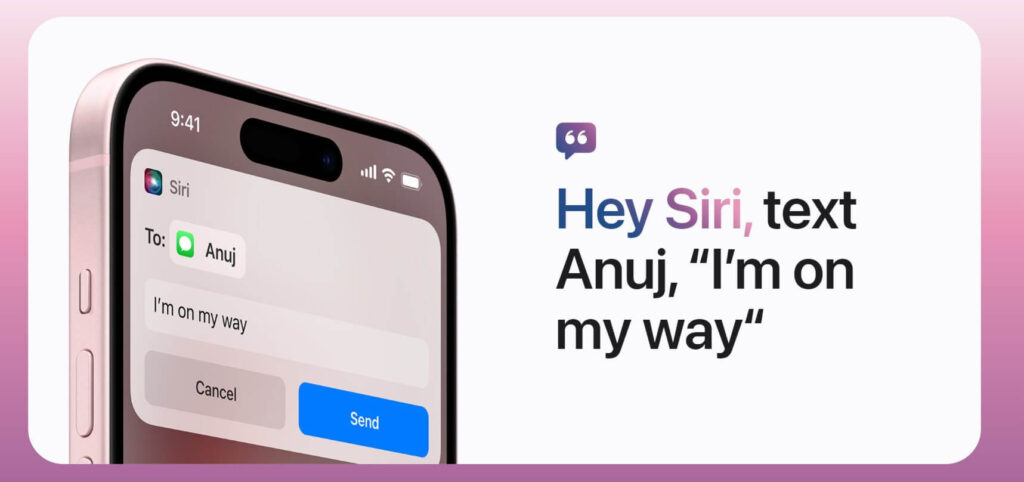Getting the attention of a personal assistant app on your phone typically involves using a wake word or a specific command. Here are some common wake words and commands for popular personal assistant apps:
Google Assistant (Android):
- Wake Word: “Hey Google” or “OK Google”
- Command: After saying the wake word, follow up with your request or question.
Siri (iOS):
- Wake Word: “Hey Siri”
- Command: After activating Siri, state your request or question.
Amazon Alexa:
- Wake Word: “Alexa”
- Command: After saying the wake word, follow up with your request or question.
Samsung Bixby:
Make sure your phone is configured to recognize the wake word, and it’s usually a good idea to speak clearly and directly into the device’s microphone. Keep in mind that some devices may allow you to customize the wake word, so check the settings of your personal assistant app for any available options.
Additionally, be aware of ambient noise and ensure your microphone is not muted. If you’re having trouble, check the specific documentation or support resources for your device and personal assistant app.
Benefits of AI Personal Assistant Apps
AI personal assistant apps have become indispensable in simplifying daily tasks and enhancing efficiency. These voice-activated assistants respond to commands, making it easy to set reminders, send texts, check the weather, and perform various tasks through hands-free convenience.

Here’s a look at the diverse use cases that highlight the true potential of AI personal assistant apps:
1. Voice Commands for Everyday Tasks:
- Simplify daily routines by responding to voice commands, allowing users to multitask effectively.
2. Smart Home Control:
- Integrate with smart home devices for controlling lights, thermostats, security systems, and more through voice commands.
3. Virtual Shopping Assistant:
- Facilitate online shopping by helping users find products, providing recommendations, and even placing orders.
4. Healthcare Support:
- Assist users with medication reminders, symptom tracking, and scheduling doctor’s appointments for better health management.
5. Navigation and Travel Planning:
- Aid users in planning routes, booking flights, and discovering nearby attractions for an enhanced travel experience.
6. Language Translation:
- Provide instant language translation services to break down language barriers during international travel or communication.
7. Professional Productivity:
- Boost productivity by scheduling meetings, managing calendars, and automating administrative tasks.
8. News and Information Updates
9. Educational Support:
- Offer valuable learning resources, answer questions on various subjects, and provide tutoring for students and lifelong learners.
10. Entertainment and Content Discovery:
- Personalize the entertainment experience by recommending music, movies, podcasts, and books based on user preferences.
Additional Advantages:
- 24/7 Availability for Exceptional Customer Support
- Boosted Productivity Through Automation
- Enhanced Work-Life Balance
- Precision in Responses
- Personalized User Experience
- Reduced Waiting Times
- Continuous Learning Opportunities
- Efficient Routine Task Management
Developing an AI Personal Assistant App: A Step-by-Step Guide

If you’re considering diving into AI personal assistant app development, here’s a step-by-step guide to navigate this exciting journey:
1. Define Your Objectives:
- Clarify the purpose and objectives of your AI personal assistant app, understanding the tasks it will perform and the target audience.
2. Choose the Technology Stack:
- Select the technology stack that aligns with your project’s requirements, including programming languages and frameworks.
3. Data Collection and Processing:
- Gather and preprocess relevant data to train your assistant effectively.
4. Implement Natural Language Processing (NLP):
- Integrate NLP algorithms to enable your app to understand and interpret user inputs accurately.
5. Speech Recognition:
- If voice-activated, incorporate speech recognition technology to convert spoken words into text.
6. Machine Learning Models:
- Develop and train machine learning models to improve accuracy and responsiveness over time.
7. Design User Interfaces:
- Create intuitive and user-friendly interfaces for seamless interaction.
8. Cloud Integration:
- Leverage cloud computing services for scalability and reliability.
9. Personalization and User Profiles:
- Implement user profiles to provide personalized experiences based on user interactions.
10. Security and Privacy:
- Prioritize security and user data privacy with robust encryption and authentication protocols.
11. Testing and Quality Assurance:
- Thoroughly test your app across various scenarios to identify and resolve bugs.
12. User Training and Feedback:
- Educate users on effective interaction and encourage feedback for continuous improvement.
13. Launch and Deployment:
- Prepare your app for deployment on the chosen platform(s) and devices.
14. Continuous Improvement:
- Monitor user interactions and feedback for regular updates and enhancements.
Elevate your AI personal assistant app with these must-have features:
- Natural Language Processing (NLP): The backbone for understanding user commands.
- Voice Recognition: High-quality technology for accurate transcription of voice commands.
- Multilingual Support: Cater to a global user base with support for multiple languages.
- Task Automation: Allow users to delegate tasks for efficient daily routines.
- Personalization: Learn from user interactions for tailored responses over time.
- Cross-Platform Compatibility: Ensure seamless user experience across various devices and platforms.
- Integration with Third-Party Apps: Provide convenience by integrating with popular third-party services.
- Contextual Awareness: Understand context by remembering previous interactions for more relevant responses.
- Continuous Learning: Implement machine learning for ongoing improvement based on user feedback.
- Security and Privacy Features: Prioritize robust encryption and user-friendly privacy settings.
Cost-Affecting Factors for AI Personal Assistant App
Developing an AI personal assistant app involves various factors that can influence costs:
- Complexity of Features: The range and complexity of features impact development costs.
- Natural Language Processing (NLP): Developing sophisticated NLP algorithms can be costly.
- Data Collection and Processing: Gathering and preprocessing large datasets for training contribute to costs.
- Speech Recognition Technology: High-quality speech recognition technology adds to development expenses.
- Multilingual Support: Supporting multiple languages requires additional resources for translation and language-specific models.
- Cross-Platform Compatibility: Ensuring compatibility across platforms and devices may increase costs.
- Integration with Third-Party Apps: Integrating with third-party services can be complex and add to expenses.
- Machine Learning and Continuous Learning: Implementing and maintaining machine learning models involves ongoing costs.
- Security and Privacy Features: Ensuring data security and privacy compliance adds to development expenses.
- Quality Assurance and Testing: Rigorous testing across various scenarios is crucial and contributes to costs.
- Maintenance and Updates: Regular updates for bug fixes and feature enhancements involve ongoing expenses.
- User Support and Feedback: Providing efficient customer support channels and handling user feedback may require additional resources.
- Scalability: Building scalable architecture for a growing user base may involve additional upfront costs.
- Research and Development: Staying updated with the latest AI advancements may contribute to expenses.
Explore the personal assistant apps making waves in the market:
- Google Assistant:
- Key Features: Voice and text commands, smart home control.
- Best For: Android users seeking efficient device interaction.
- Pricing: Preloaded on many Android devices.
- Amazon Alexa:
- Key Features: Smart home control, millions of Alexa skills.
- Best For: Reliable voice assistants for home and office tasks.
- Pricing: Preloaded on many Amazon products.
- Siri by Apple:
- Key Features: Query responses, connects to Apple services.
- Best For: Apple device users needing assistance with daily tasks.
- Pricing: Preloaded on many Apple devices.
- Tykr:
- Key Features: Stock market insights, investment opportunities.
- Best For: Informed investment decisions.
- Pricing: AI stock insights start at $29.99/mo.
- Wally:
- Key Features: Insights into spending habits, effective budgeting.
- Best For: Managing personal finances.
- Pricing: Free to use, with in-app purchases.
- Cleo:
- Key Features: Insights into spending habits, banking features.
- Best For: Managing personal finances.
- Pricing: Available with various banking features.
- Jasper:
- Key Features: AI writing assistant for content creation.
- Best For: Content creators and businesses.
- Pricing: Plans start at $49/mo.
- Copy.ai:
- Key Features: AI writing assistant for various content types.
- Best For: Writers, marketers, and businesses.
- Pricing: Plans start at $49/mo.
- WriteSonic:
- Key Features: Over a hundred writing recipes/templates.
- Best For: AI-powered content creation for various purposes.
- Pricing: Plans start at $19/mo.
- Hoppy Copy:
- Key Features: Comprehensive email marketing AI assistant.
- Best For: Marketers and salespeople streamlining email campaigns.
- Pricing: Available with various email marketing features.
To develop an AI personal assistant app, you’ll need an essential tech stack:
1. Natural Language Processing (NLP):
- Python, NLTK, spaCy.
2. Speech Recognition:
- CMU Sphinx, Google Cloud Speech-to-Text.
3. Machine Learning and AI:
- TensorFlow, PyTorch, Scikit-learn.
4. Cloud Services
5. Database Management:
- MongoDB, MySQL, Redis.
6. Development Frameworks:
- Django or Flask (backend), React or Vue.js (frontend).
7. Integration with Third-Party Services:
- APIs, OAuth.
8. DevOps and CI/CD:
- Jenkins, Docker, Kubernetes.
9. Security and Privacy:
- JSON Web Tokens (JWT), SSL/TLS.
- HTML, CSS, JavaScript, Material-UI or Bootstrap.
11. Version Control:
- Git.
Conclusion
In conclusion, the world of AI personal assistant apps offers boundless potential. Whether you’re an entrepreneur with a groundbreaking idea or a business looking to enhance user experiences, the journey of creating a cutting-edge AI personal assistant app is an exciting and achievable endeavour.
Frequently Asked Questions
Q. What is the key technology behind AI personal assistant apps?
- A. AI personal assistant apps rely on technologies such as Natural Language Processing (NLP), Machine Learning (ML), and speech recognition to understand and respond to user commands and queries.
Q. How do AI personal assistants learn and improve over time?
- A. AI personal assistants use machine learning algorithms to analyze user interactions and feedback, continuously adapting and improving their responses based on data.
Q. What are the challenges in developing AI personal assistant apps?
- A. Challenges include training accurate NLP models, managing large datasets, ensuring user privacy and data security, and seamless integration with third-party services.
Q. What platforms and devices are AI personal assistant apps compatible with?
- A. AI personal assistant apps can be designed for various platforms such as mobile devices (iOS and Android), web browsers, and smart speakers, ensuring accessibility for users globally.


























![The Apex Legends Digital Issue Is Now Live! Apex Legends - Change Audio Language Without Changing Text [Guide]](https://www.hawkdive.com/media/5-Basic-Tips-To-Get-Better-On-Apex-Legends-1-218x150.jpg)










